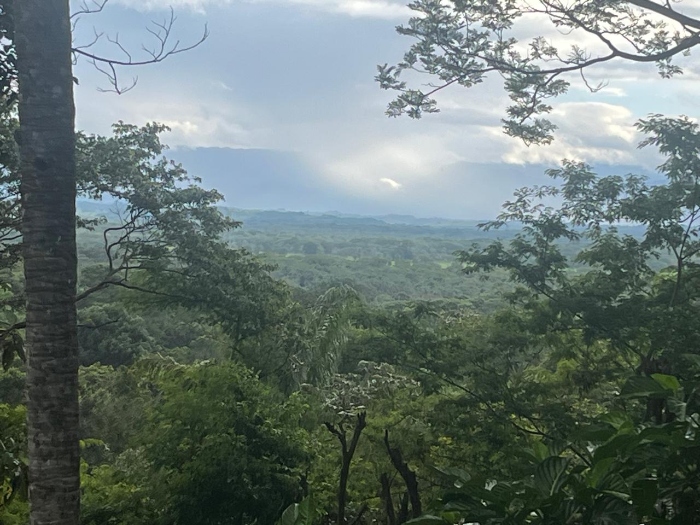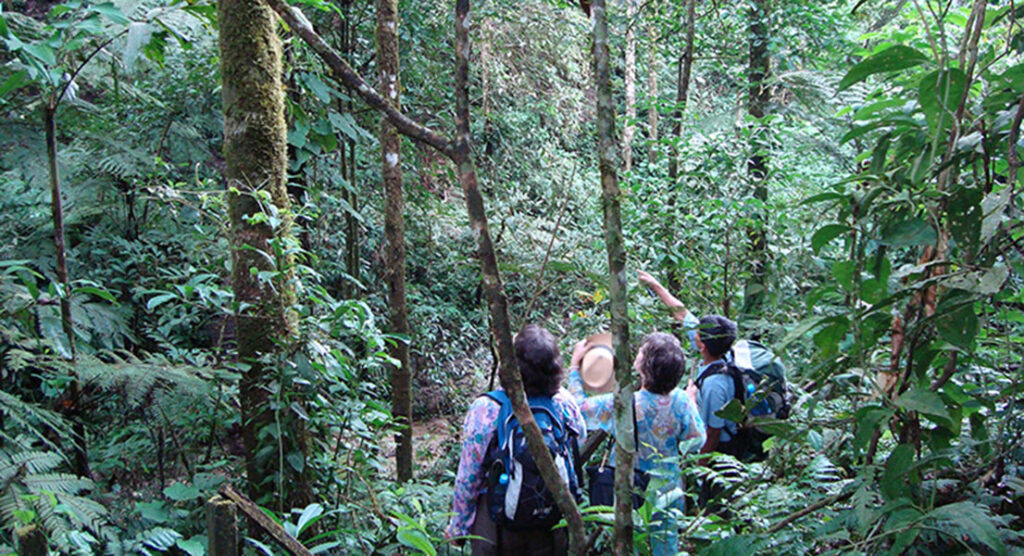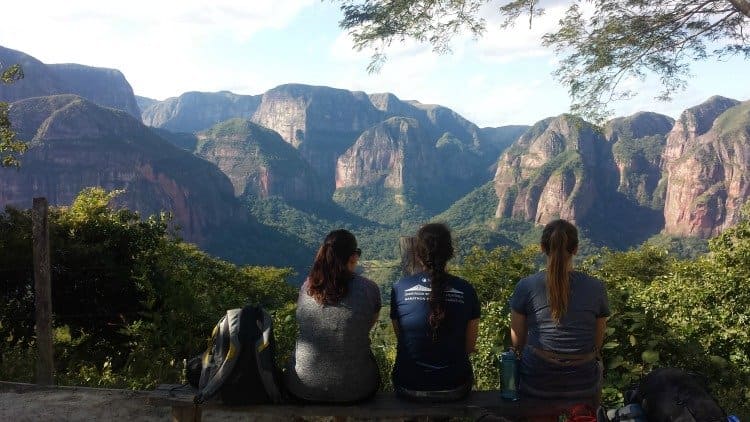San Miguelito Ranch
Share:
Facebook
X
Telegram
WhatsApp
Email

San Miguelito Ranch is a 'Green Water Buffalo Ranch' protecting jaguars
Through conservation, education, and sustainable ranching, San Miguelito has become an important birding hotspot in Bolivia (eBird.org) and home to six feline species.
We’ve just completed an unforgettable tour at the San Miguelito Jaguar Conservation Ranch—and the wildlife truly showed up!
Despite the heavy rains in late March and early April, nature never stopped amazing us.
We had the rare privilege of spotting a Geoffroy’s cat (Leopardus geoffroyi)—a species so elusive that many people spend their entire lives in the wild without ever seeing one. And that wasn’t all…
We saw a pair of jaguars, several species of snakes and lizards, a giant anteater, and an incredible variety of birds, including the vibrant Amazonian motmot, the elegant Maguari stork, the imposing Jabiru (the largest flying bird in South America), and the dazzling blue-crowned trogon with its brilliant blue and green colors.
Bird activity was spectacular, with dozens of species displaying their plumage and songs.
We also saw the largest and the smallest monkeys in the forest—the powerful howler monkey and the tiny, curious black-tailed marmoset.
In total, we recorded 16 different mammal species during the tour—further proof of how alive and rich this land is.
Even with the seasonal rains, nature remains vibrant—and each tour reminds us how much more there is to learn and appreciate.
Important Details
San Miguelito Ranch Tours
San Miguelito Ranch Jaguar Conservation
San Miguelito ranch is an emerging wildlife tourism destination located just 3 hours or 190 km from the city of Santa Cruz, Bolivia. It lies in the heart of the country’s agricultural capital and is accessible year-round. This beautiful place is part of the ecotourism project “La Ruta del Jaguar”, where it serves as a pilot and demonstration ranch. The project involves several organizations and aims to help reduce the hunting of large cats in cattle expansion areas by promoting anti-predation strategies and economic compensation for livestock loss through jaguar-based ecotourism (Panthera onca) as a flagship species.
The ranch includes a conservation area—unique in Latin America—where six different feline species have been confirmed, including jaguars, pumas, ocelots, margays, pampas cats, and jaguarundis, all coexisting in the same forest and recorded by camera traps, according to research conducted by the Wildlife Conservation Society (WCS).
This region is known as Bolivia’s grain belt, as most of the neighboring lands have already been deforested for agricultural and livestock activities. This makes San Miguelito’s protected area a fragmented agricultural landscape and one of the last refuges for much of Santa Cruz’s native wildlife.
San Miguelito has opened its doors to the public and offers a variety of ecotourism activities, including more than 25 kilometers of ecological trails with camera traps placed along the paths, allowing visitors to observe and document the incredible variety of wildlife inhabiting the area.
We offer several natural viewpoints, such as the Jaguar Cave, the Jichi Lagoon, the Cactus Trail, and the Otter Rock (Piedra de la Londra), among others, which are part of our many excursions. Visitors can also enjoy canoe trips to observe a wide variety of wildlife along the river, or explore on 4×4 vehicle tours for those seeking a bit more adventure during their stay at this private reserve.
For a more relaxed experience, we offer horseback rides along the trails, which allow you to see and hear a great variety of animals.
San Miguelito Ranch Jaguar Conservation Itinerary – 3 Days / 2 Nights
Activities are subject to weather conditions and the tourist’s physical condition.
Day 1
8:30 a.m. – Pick-up from your hotel or accommodation in a private vehicle and departure to San Miguelito.
The adventure begins with a short group introduction and signing of the responsibility form.
Don’t forget to bring your valid ID, face mask, and personal gear for your stay (we will send you a recommended packing list with items such as insect repellent, sunscreen, etc. once your trip is confirmed).
On the way to San Miguelito (SM), you will observe the loss of natural habitat, as much of the forest has been turned into farmland for industrial crops by local settlers, Mennonite colonies, and farmers from neighboring countries.
Sustainable cattle ranching combined with nature tourism is one of the few productive land uses that allows the conservation of wildlife and the ecosystem services we enjoy but often take for granted—such as water sources, climate regulation, pollinators, pest control, biodiversity, and recreation.
Travel time by vehicle: 3 to 4 hours, depending on traffic and the route.
We will arrive just in time to enjoy a delicious lunch with a spectacular view.
Upon arrival, there will be a short introduction to the water buffalo ranch operation.
Inside the main house, you’ll find a wildlife photo gallery from the property, a small museum, a beautiful view from the fireplace, and a 7-meter observation tower next to the house.
After lunch, visitors can relax at the lodge or prepare for the first adventure: a trip to a site known as the “bat cliffs,” combining a walk and a 4×4 ride to watch the sunset. With some luck, you may see a pair of Jabiru storks (the largest bird in South America with a wingspan of 1.5 m) with their chicks.
Great horned owls are also commonly spotted at dusk. As night falls, thousands of bats emerge from the cracks in the cliffs, depending on the moon phase.
We will install camera traps along the so-called “Jaguar Route.” We’ll look for tracks and check footage from previous expeditions.
Upon returning, a tasty dinner will be served and we’ll review the camera trap images together.
Wildlife sightings are always a surprise!
Included: Lunch and dinner, natural juices prepared with bottled water.
Alcoholic drinks and souvenirs (handmade by neighboring indigenous communities) are available for an additional cost.
Day 2
5:30 a.m. – Sunrise
We start the day early, enjoying coffee or hot chocolate from the observation platform, accompanied by the sounds of nature.
We may visit the water buffalo stables, where fresh cheese, spicy cheese, mozzarella, or yogurt is produced—depending on the day.
The ranch is located at the intersection of several ecoregions: the alluvial plains of the Chaco and the Precambrian or Chiquitano Shield, divided by the San Julián River. This location results in high biodiversity.
During the early morning walks, we will look for wildlife. These are ideal hours for spotting monkeys, birds, and with luck, large mammals.
We’ll visit an area along the riverbank where jaguars have been previously seen.
On the aluminum boat ride, you might spot big cat tracks.
After breakfast, there is time to rest at the main house and learn about daily life on a working cattle ranch.
We’ll have lunch and then head to another part of the ranch near the river, where camera traps have recorded the presence of large wild cats.
The SM landscape is unique: dry hills with low forests, savannas, and fire-adapted vegetation (such as small palms, bromeliads, and cacti), similar to Brazil’s Cerrado.
We have species lists, descriptions, and field guides for bromeliads, ferns, orchids, and aquatic plants.
Depending on the weather and your physical condition, we may visit sites such as the Jaguar Cave, go on a boat tour, or return to the bat cliffs for sunset viewing.
Included: Breakfast, lunch, and dinner.
Optional: Visit to San Antonio de Lomerío (39 km from SM), an indigenous community that still speaks the native Besiro language. It is part of the Jesuit Missions circuit in Bolivia (1 hour from SM, round trip approx. 3 hours).
At night: Night drive or walk / stargazing around the campfire.
Day 3
5:30 a.m. – Optional sunrise from the observation tower
6:00 a.m. – Coffee or tea
Depending on the group’s preference, we can go for an early walk or enjoy the sunrise from the tower.
After breakfast, we’ll explore wildlife along the river.
San Miguelito is home to threatened mammals such as jaguar, tapir, giant armadillo, and river otter (all classified as vulnerable).
Also found here are peccaries, giant anteaters, capybaras, and many types of rodents.
Thanks to camera traps and track monitoring, six species of wild cats, six monkey species, and two deer species have been recorded.
More than 300 species of birds have been documented, including herons, storks, ibises, ducks, and chajás. There are also vultures, raptors, parrots, macaws, owls, and many small birds.
Among the reptiles, yacaré caimans are especially abundant in the lagoons during the dry season.
After the morning tour, we will pack up and get ready to return.
At noon, lunch is served, and then we begin the return journey to Santa Cruz city.
You will be dropped off at your hotel or the airport between 6:00 and 7:00 p.m., depending on traffic.
Important Details San Miguelito Ranch
The price includes
- Please ask about it
It Does NOT Includes:
- Please ask about
What To Bring ?
(DO NOT BRINGS THINGS YOU MAY DO NOT NEED)
- Passport (Original) Or identifications documents valid in Bolivia
- Sunscreen.
- A Cap or a Hat ( No to be used under the trees or branches).
- Sun Glasses.
- A Warm Sweater.
- Raincoat.
- Swimsuit
- Insect Repellents.
- Long-sleeved shirt- Pants Light colour.
- Mosquitoes are especially attracted by dark colour..
- Plastic bags to protect whatever you do not want to get wet.
- Trekking Shoes or others proper Shoes.
- Bring your own medication for your personal needs.
- Personal items you may need
- Trekking shoes, A pair of sandals and/or light shoes to walk in streams or rivers.
- A hand torch Hand & head lamp with enough batteries.
- Enough cloth.
- A pair of trousers. It should become shorts and dry fast.
- Sandals
Recommendations
Follow the guide’s instructions.
- Do not explore on your own.
- Do not touch any insect or reptile.
- Protect things you want to keep dry by putting them in plastic bags.
- Do not litter. Including cigarette butts.
- Be careful about SLIPPING and falling, when crossing the rivers and streams or by the natural swimming pools.
- Do not jump from place to place.
- Do not smoke or light Candles inside the tents.
- Do not lift any rocks or logs..
- In the natural places where you take a bath do not use shampoo or soap.
Deodorant.- Try not to bring to the forest strong odor substances Keep In Mind: The changing weather can affect your future plans.
- It is prohibited to hunt or capture any animal species or extract plants.
Videos
San Miguelito Ranch
★★★★★ 5/5
Fantastic experience - we had a great guide and wonderful food. They went out of their way to answer our questions and to take us on a night hike because we expressed interest. It is rugged for sure, but absolutely worth it!
Kate CentellasFebrero 2024
I had been to the South American jungles twice before, once in Ecuador and once in Peru, but this trip was definitely the best. I saw a tapir and my guide really knew about the wildlife in the region, much more so than any other guides I had had previously.
G WEnero 2024
We had a great trip - wonderful food, rigorous hiking, excellent guide. Our guide was very knowledgeable about local flora and fauna, and answered our questions about land use conflicts and threats to the park. Unforgettable experience
FriendsJul 2023
We booked this tour last-minute and were happy we still got to go, even though the season seemed to have ended. Good contact with the owner/organization. Communication on the itinerary could have been a little better. Food was nice, even for vegetarians. Not a lot to do in the evening, so bring a book or some cards.
CouplesNov 2023
I had been to the South American jungles twice before, once in Ecuador and once in Peru, but this trip was definitely the best. I saw a tapir and my guide really knew about the wildlife in the region, much more so than any other guides I had had previously. I asked about very specific, niche bird species that live in Bolivia and he knew exactly where to find them and where not.
SoloOct 2023














